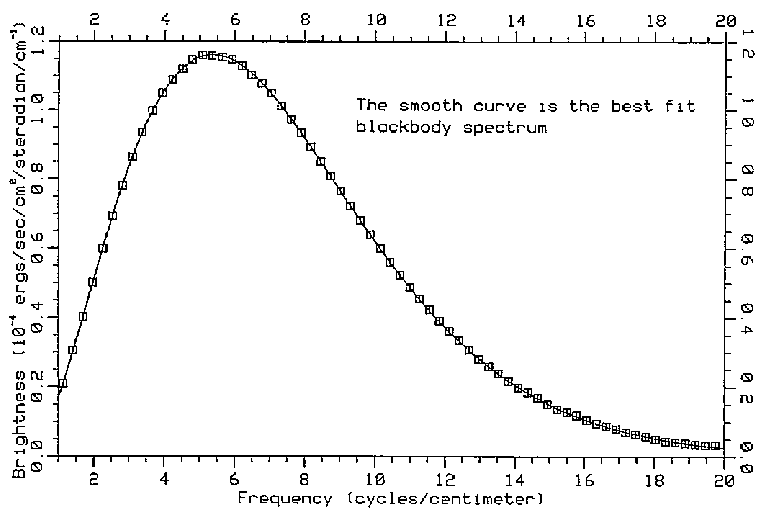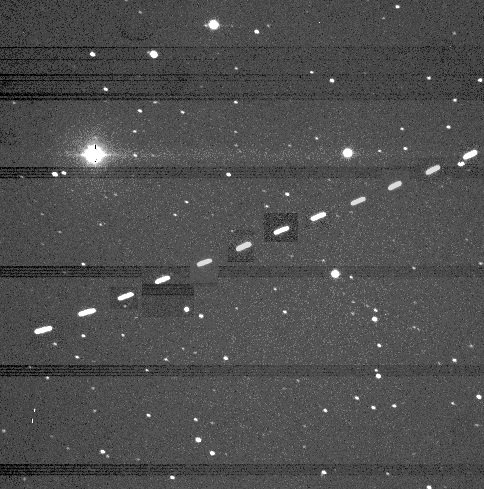Details of 2002NY from JPL.
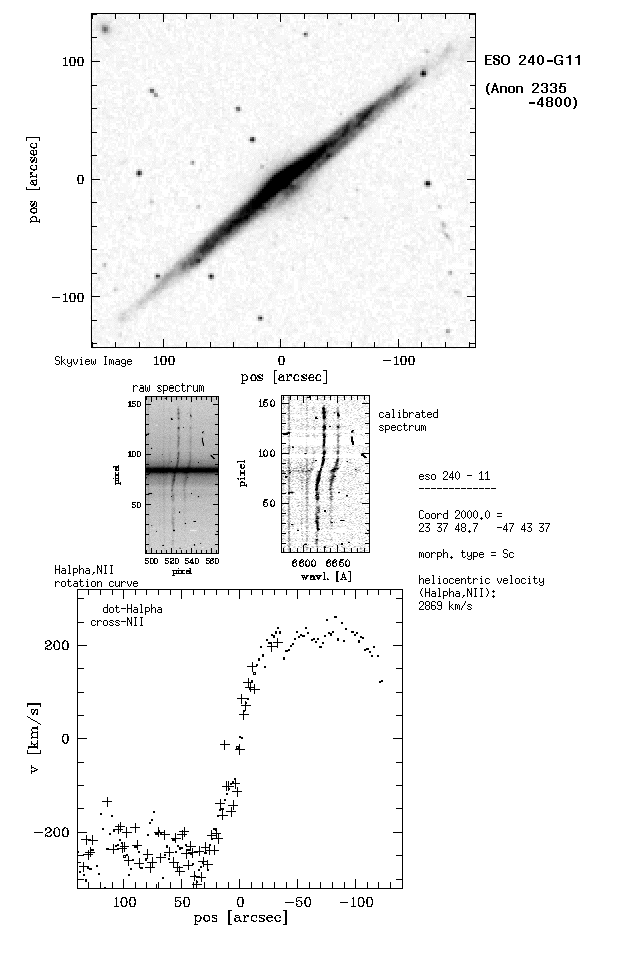
|
Rotation curve of a spiral galaxy; see the
Review paper by Vera Rubin
in Annual Reviews of Astronomy and Astrophysics from 2001
|
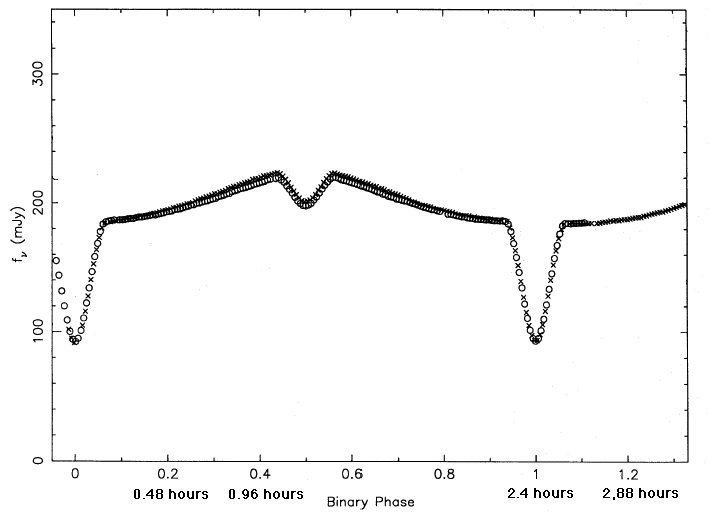
|
Lightcurve of the eclipsing binary HW Virginis, from
Wood et al. 1993, MNRAS, 261, 103.
|
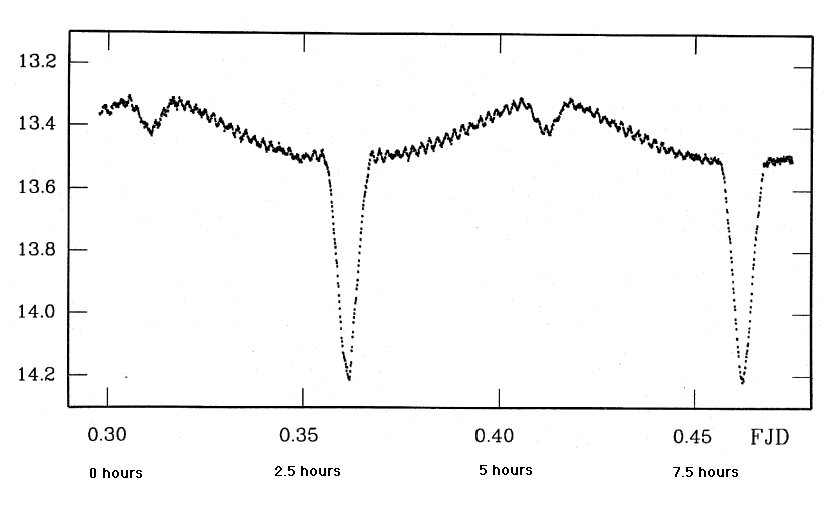
PG1336 - another eclipsing binary, with a twist!
|
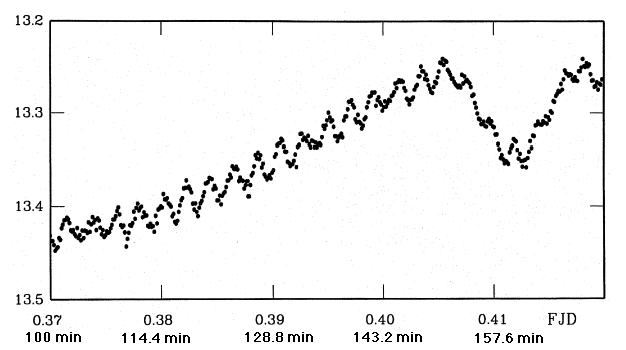
Pulsations in PG1336, from
Kilkenny et al. 1998, MNRAS, 296, 329
|

|
Mira, the wonderful. Pulsating star with a period of about 1 year.
Data from amateur
observers through the AAVSO.
|
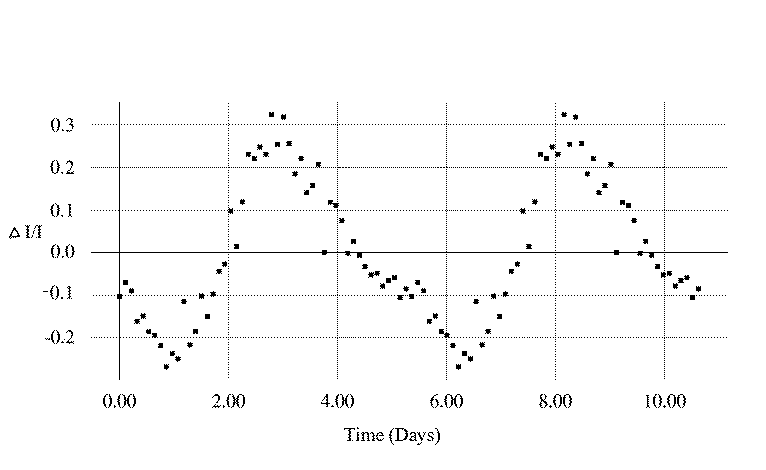
|
Light curve of delta Cepheus, period is 5.3 days.
Data from amateur
observers through the AAVSO.
|
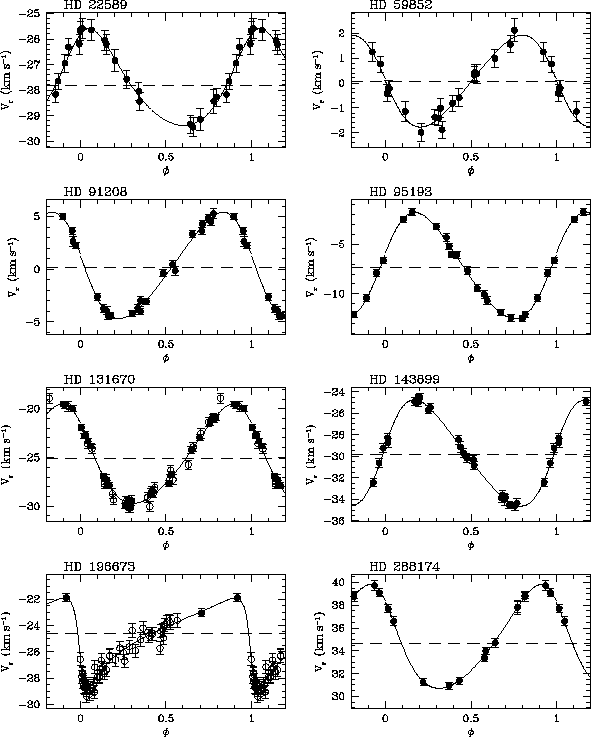
|
Radial velocity curves for binary stars. See, for example, the paper by
Udry et al. 1998, A&Ap.Supp., 131, 25
|
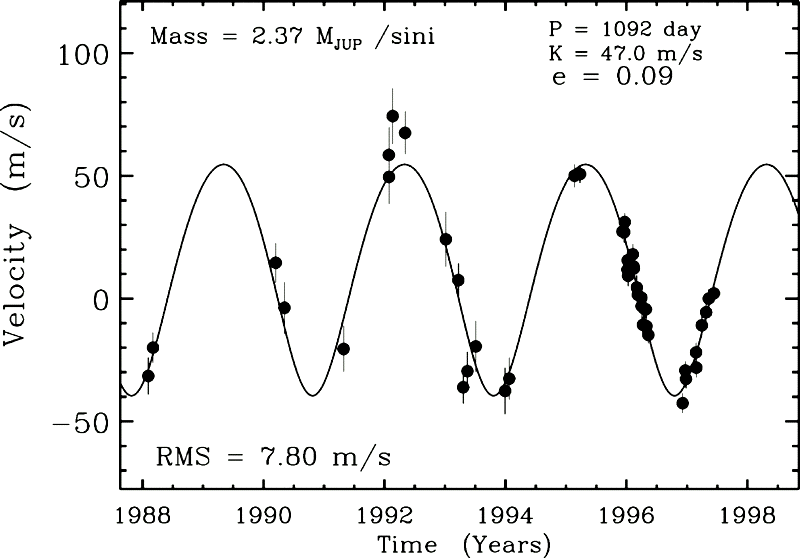
|
Radial veolcity curve of 47 Ursa Majoris, caused by a planet orbiting the
star. See
this
entry from Geoff Marcy's research website. Also, the paper from the
Astrophysical Journal is quite good:
Butler, R.P. & Marcy, G. 1996, ApJL, 464, 153
|
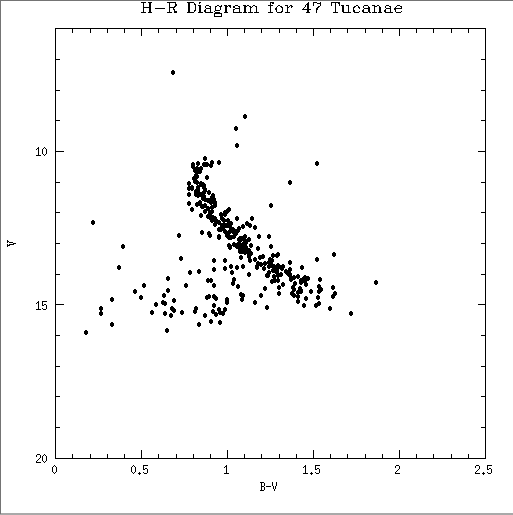
|
H--R diagram for the globular cluster 47 Tucanae. An image of the cluster
itself (glorious!) is
here. Actually, this is a 'color-magnitude' diagram, with color (expressed as a ratio of brightness in two broad spectral bands) on the X
axis and magnitude (relative brightness) on the Y axis.
|
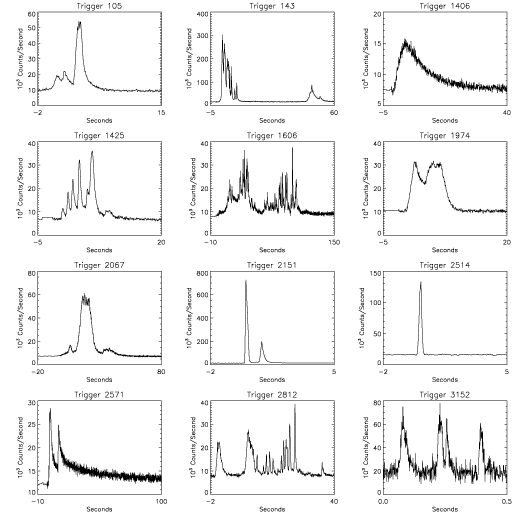
|
Gamma Ray Burst sample light curves. See the BATSE page
for more info on GRB observations.
|

|
Gamma ray bursts on the sky - note the homogeneous distribution.
|
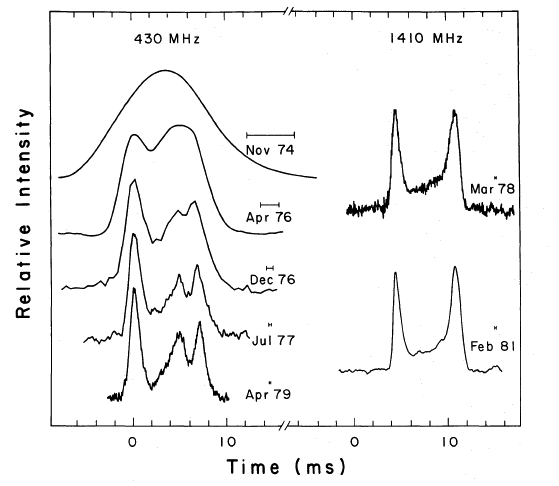
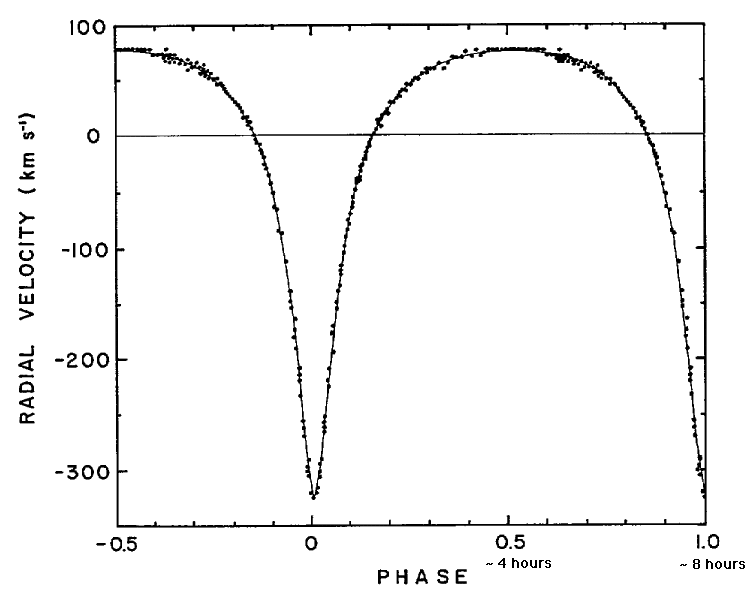
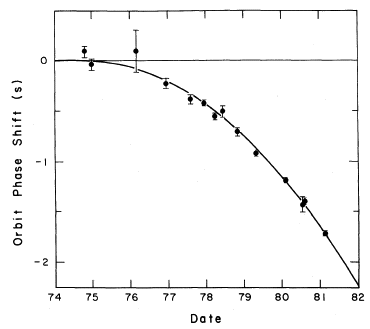
|
The Binary Pulsar - a test of general relativity that led to the Nobel Prize
for Russel Hulse and Joe Taylor. Detailed in three papers:
-
Hulse, R. & Taylor, J. 1975, ApJL, 195, L51The discovery paper - a short
way to the Nobel.
-
Taylor, et al. 1979, ApJL, 206, L53 First monitoring results for apsidal
motion.
-
Taylor & Weisberg 1982, ApJ, 253, 908 The complete analysis
|

|
Supernova in M74 - no arrow this time! Picture from ISU's Fick Observatory.
|
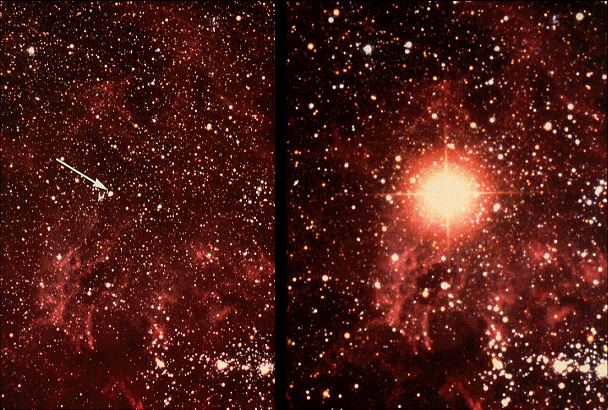
|
Supernova 1987A in the Large Magellanic Cloud (no arrow needed!).
|
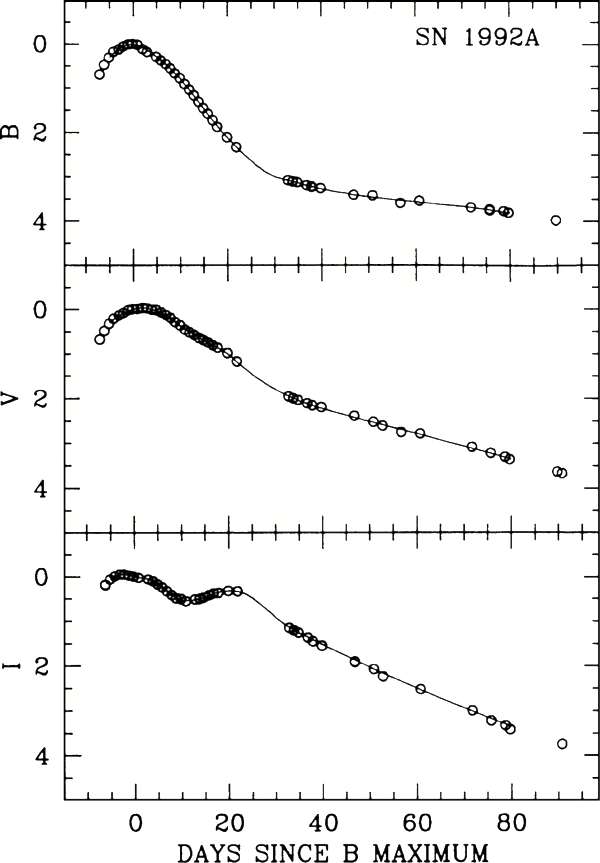
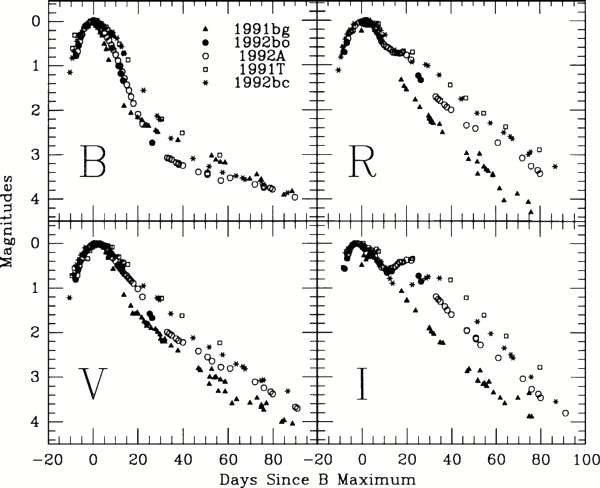
|
Supernova light curves...
|
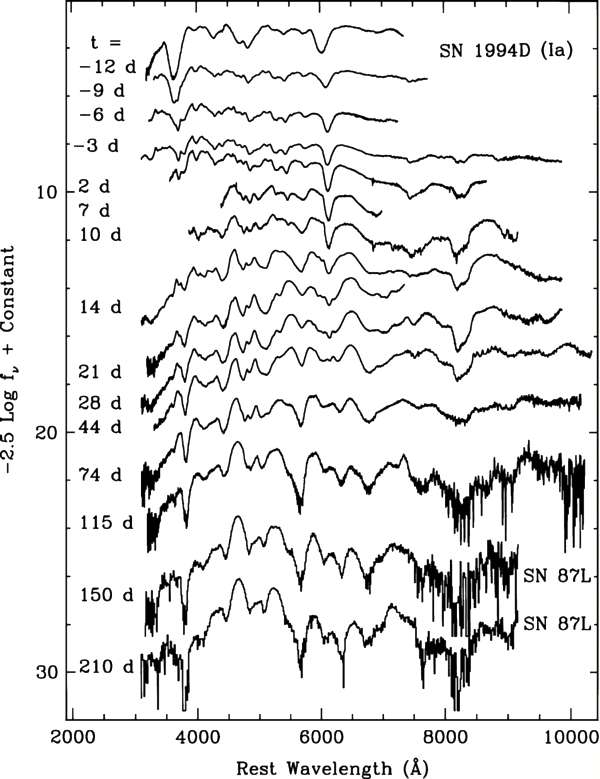
|
Spectra of a single supernova at different times following outburst. Note
appearance of heavy metal lines, and width of the spectral lines.
|
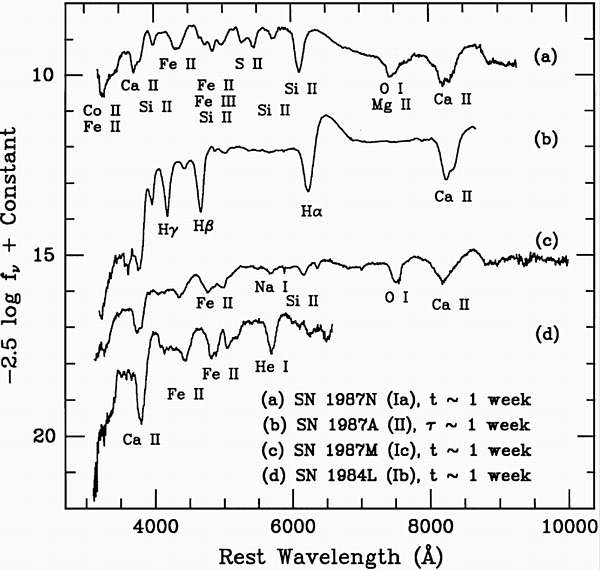
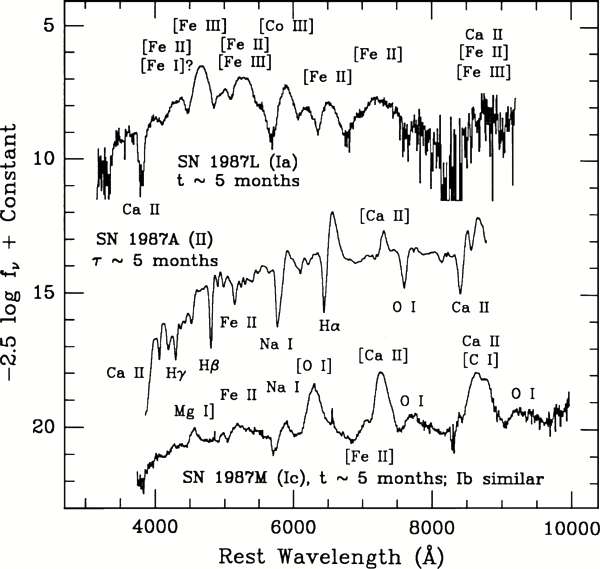
|
Spectra of supernovae of different types - note presence (or absence) of
hydrogen lines and iron...
|
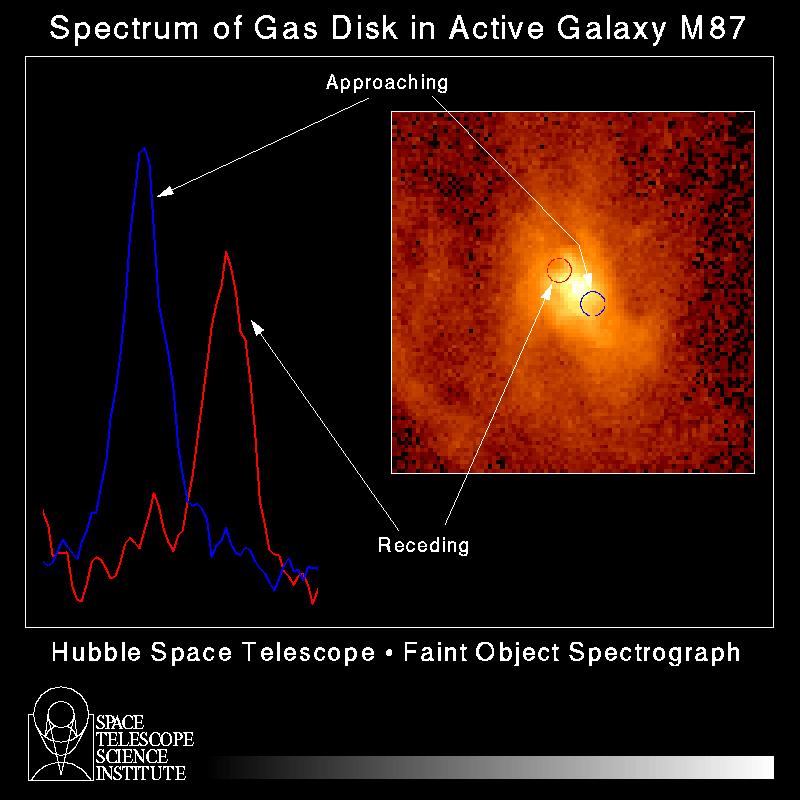
|
The black hole in M87 - click on the image for the Hubble
Space Telescope information.
|

|
A galaxy cluster imaging distant galaxies - click on the image for the Hubble
Space Telescope information.
|
